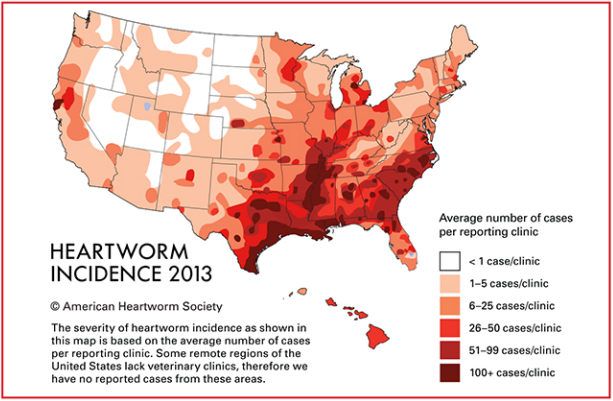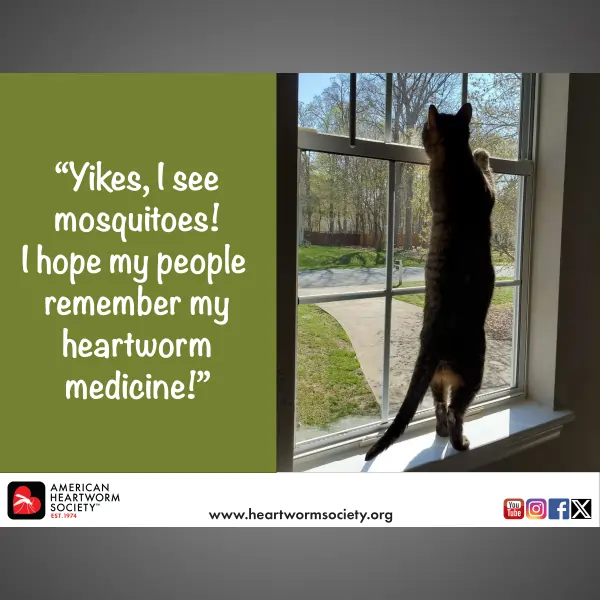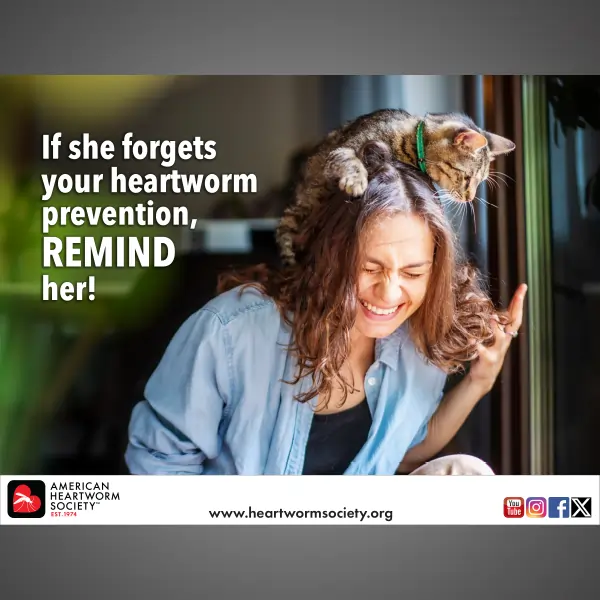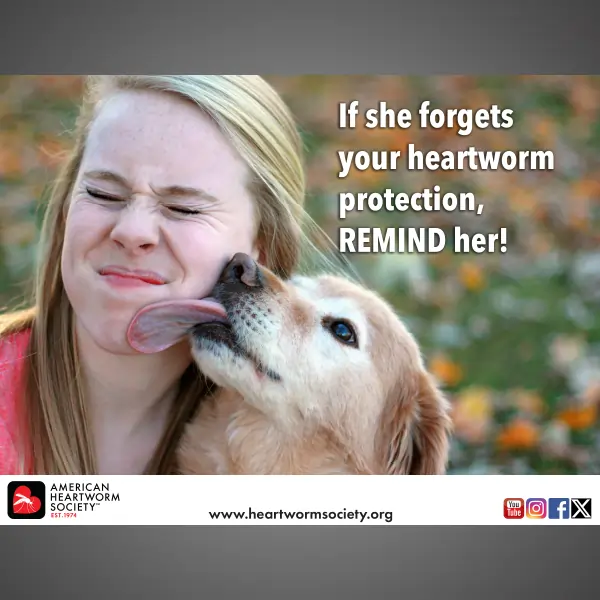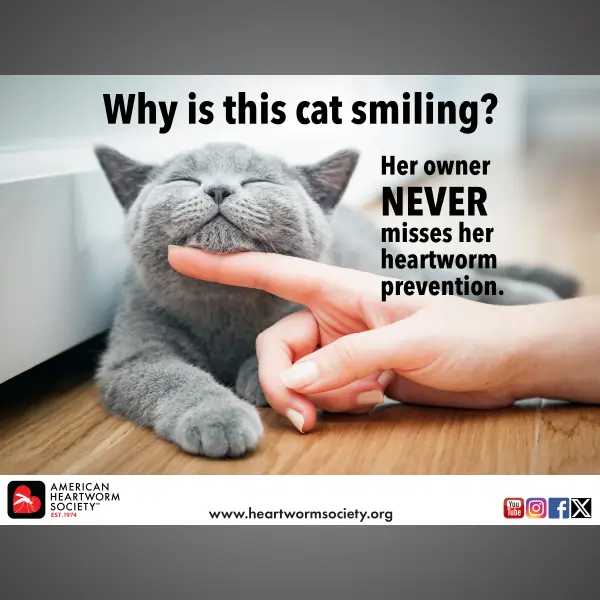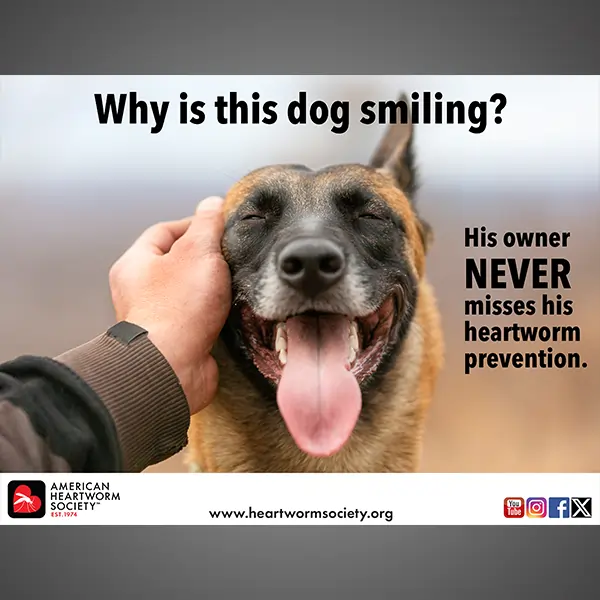MATT MILLER, DVM
Q. The American Heartworm Society (AHS) Guidelines recommend heartworm prevention nationwide. Is it really necessary to use preventives in areas where heartworm is not endemic?
A. Heartworm is considered at least regionally endemic in all 48 of the contiguous states, as well as Hawaii, Puerto Rico, the Virgin Islands and Guam. The AHS Guidelines state that both environmental changes and animal movement have increased the potential for heartworm infection. lf you look at the 2013 AHS heartworm incidence map below, you can see that heartworm is not just found in the South and Southeast, but also in areas of the West, where heartworm is historically thought not to be endemic.
Q. You mentioned "animal movement" as a factor in the geographical spread of heartworm disease. Can you explain?
A. We cannot overestimate the significance of having just one infected animal in the vicinity of unprotected pets. I moved to Phoenix from Texas less than 18 months ago, and since then have been working to convince my fellow practitioners that heartworm is a threat here. There's definite proof; since moving here, I've done several surgeries on dogs with heartworm caval syndrome-and those dogs had never left the Phoenix area.
To understand why, it's important to consider the factors that cause heartworm to spread.
Reservoir of infection
To be a reser- voir, the heartworm-positive animal needs to have circulating microfilariae. Here in Phoenix, as in many urban areas, we have a high coyote population, and coyotes are an important potential reservoir for heartworm Infected animals brought in from other parts of the country are also reservoirs.
Mosquito Vectors
While mosquitoes were once rare in arid areas, watering practices, irrigation, and light industry have created a much more favorable environment for them to thrive. Infected hosts/reservoirs in close proximity to effective and more plentiful vectors create conditions that are much more conducive to transmission than people realize.
Access
Infected mosquitoes need access to unprotected pets. Whether a dog only goes outside for brief bathroom breaks or enjoys long daily hikes with his owner, he has the potential to be exposed to mosquitoes. Taking precautions that limit mosquito exposure can help, but these precautions can't completely eliminate the risk of heartworm transmission.
Protection
The above factors can be almost completely nullified if pets are on year-round heartworm prevention. The AHS Guidelines also recommend 12-month administration to help with prevention and control of other pathogenic and/or zoonotic parasites, and to enhance compliance.
In my experience, where incidence of a disease is thought to be lower, so is vigilance . Far too many pets in this country are unprotected from heartworm, and it is up to us as veterinarians to do the best job we can for our patients.
MATT MILLER, DVM
DACVIM (Cardiology)
SENIOR PROFESSOR OF CARDIOLOGY, TAMU CVMBS
STAFF CARDIOLOGY, VHMEO CONSULTANTS
PHOENIX. ARIZONA



